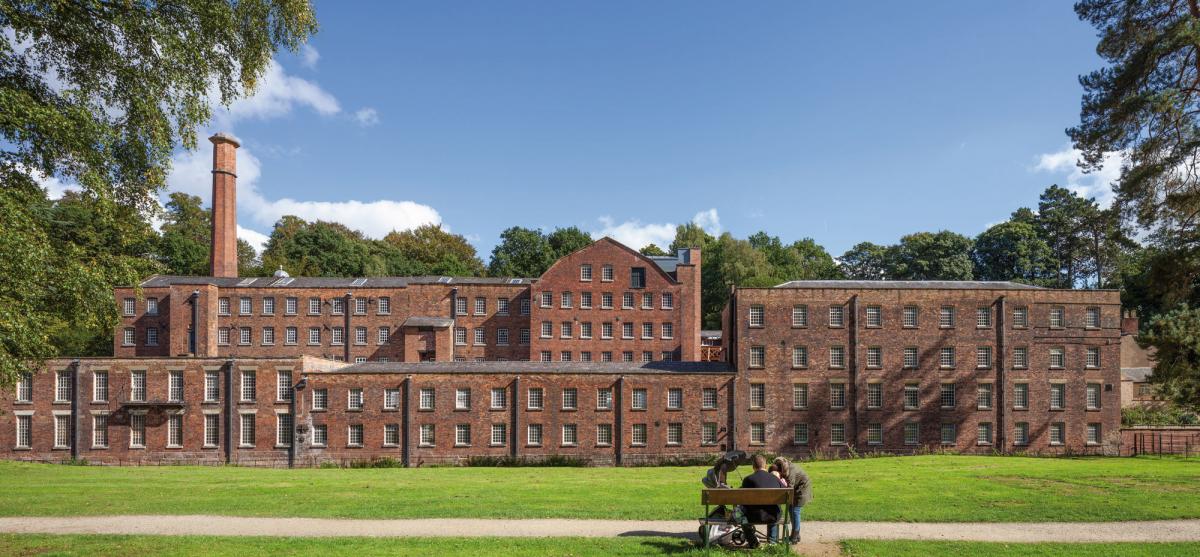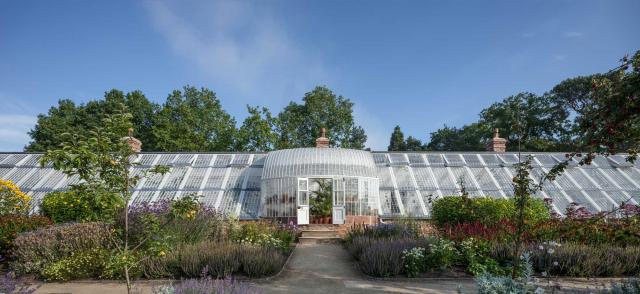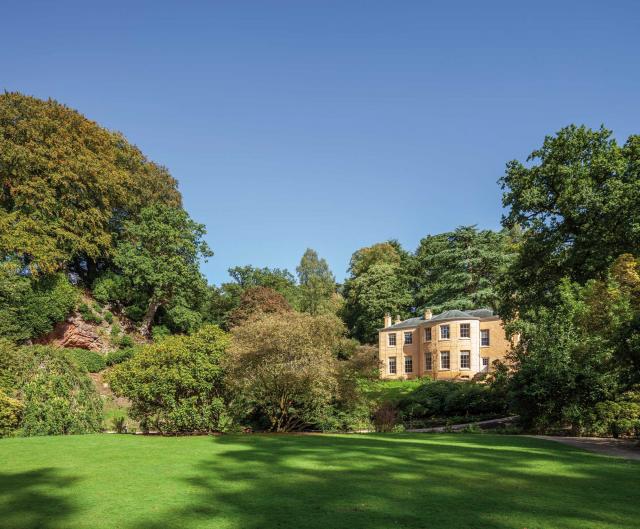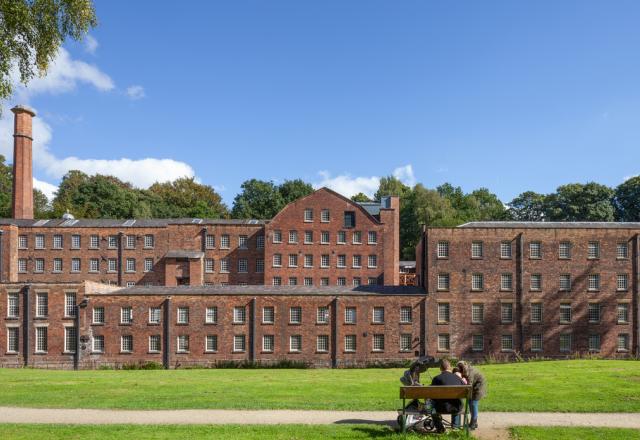The restoration of the National Trust’s Quarry Bank has been named a 2022 Civic Trust Regional Finalist.
Quarry Bank is one of the best-preserved textile mills of the Industrial Revolution and is now a museum of the cotton industry. The main mill building is Grade II* listed and is an imposing brick building sitting on the banks of the river. The history of the mill, its workers and owners then unfolds across the 300 acre Styal Estate.

We were appointed to work with the National Trust as of the ‘Quarry Bank Project’; a major Heritage Lottery Fund project which aimed to tell the whole story of the estate for the first time, with access to and interpretation of all the key buildings, structures and landscapes.
This included:
Upper gardens restoration: The first project involved the restoration of a rare, yet badly damaged, 19th century curvilinear glasshouse found in the estate’s kitchen garden. The initial stages involved the careful dismantling of the glasshouse’s damaged cast iron frame, which was transported to a workshop where, over six months, painstaking work was undertaken to repair and identify missing pieces of the structure. The new structural frame has been recast and reassembled using metal recycled from old automotive parts, while more than 7,500 panes of handmade, fishscale glass panels fill the frame.
Mill building restoration: The mill’s story has been retold through the extensive refurbishment of the mill’s gallery spaces and the installation of new interpretation displays to replace simple interactive and text heavy graphic displays. The aim was the create evocative spaces that would place visitors at the heart of the story, achieved through the use of immersive AV, physically interactive and sculptural approaches.
Styal Village properties: In Styal village, restoration work was carried out on a mill worker’s original cottages, which had remained untouched since 1970s, to give visitors an authentic insight into the lives of the mill’s workers. Fragments of 19th century wallpaper found in the cottage have been conserved, and domestic fixtures and fittings have been cleaned and repaired. An early example of linoleum flooring was also carefully removed, conserved and replaced in-situ, while the cottage’s floor and wall finishes have also been renewed.
Quarry Bank house: Quarry Bank house was built by mill owner Samuel Greg and his wife in the 18th century. Here, the policy for repair was to use matching traditional materials, details and methods, only introducing new technologies where they serve to preserve more of the original fabric in a visually non-intrusive way. Any modern additions have been carefully considered to ensure that all primary features dating from the Greg family’s occupation have been retained, removing only those elements which are detrimental to the primary historic fabric.


The finished project tells the complete story Quarry Bank - a story of social change, industrial revolution, and the ingenuity of man.
Established in 1959, the Civic Trust Awards is the longest standing built environment awards scheme in Europe. The aim of the Civic Trust Awards is to encourage the very best in architecture and environmental design, to improve the built environment for us all through design, sustainability, inclusiveness and accessibility, but also to reward projects that offer a positive cultural, social, economic or environmental benefit to their local communities.
